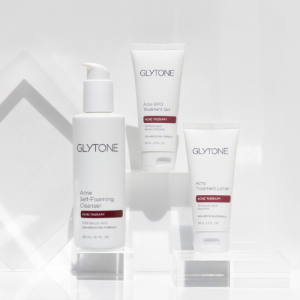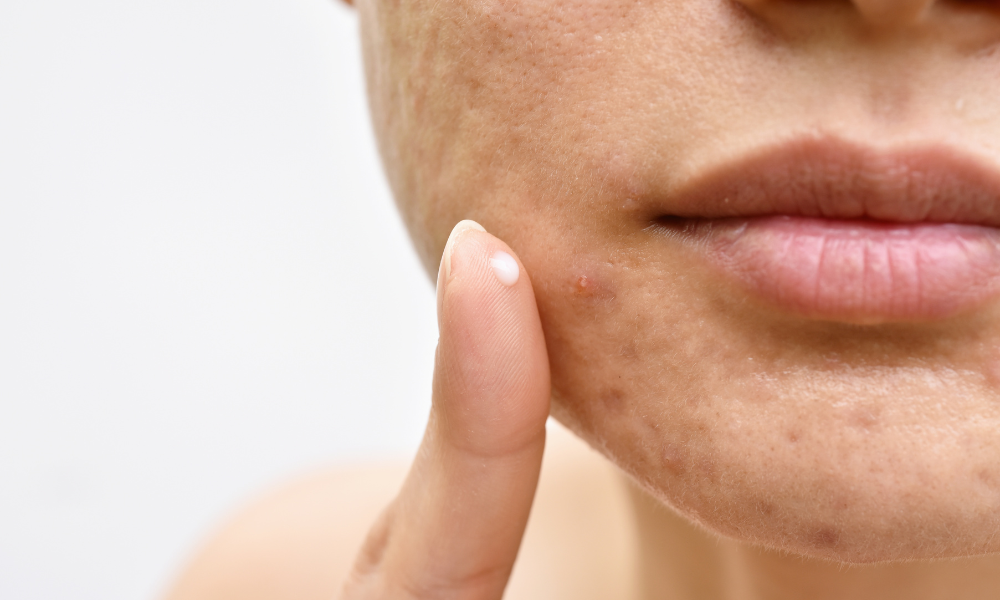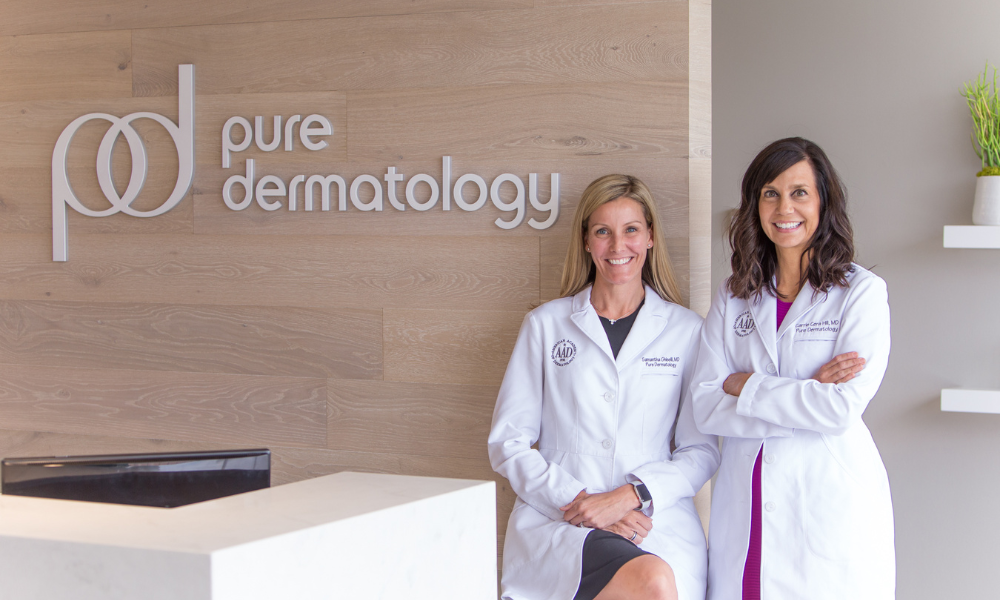Say Farewell to Acne ?
Acne is the most common skin condition in the United States. While acne usually begins in puberty or teen years, it can persist into adulthood as well. Dermatologists commonly treat teen and adult acne patients. Acne can regress or improve in adulthood, but may also worsen in some populations such as adult women and may be more severe in men. Approximately 15% of the US population has suffered from acne and, by some estimates, nearly 9 out of 10 adolescents are affected by this chronic skin condition.
Acne vulgaris is a skin condition that occurs when your hair follicles become plugged with oil and dead skin cells. It causes whiteheads, blackheads or pimples.
Acne skin lesions vary, and include:
- Whiteheads (closed plugged pores or comedones)
- Blackheads (open plugged pores or comedones)
- Small red, tender bumps (papules)
- Pimples (pustules), which are papules with pus at their tips
- Large, solid, painful lumps under the skin (nodules)
- Painful, pus-filled lumps under the skin (cystic lesions)
Following acne lesions, your skin can be left with discoloration (post inflammatory hyperpigmentation or erythema) or even permanent marks (acne scars) in some cases.
Four main factors cause acne:
- Excess oil (sebum) production
- Hair follicles clogged by oil and dead skin cells
- Bacteria
- Inflammation
-
Acne typically appears on your face, forehead, chest, upper back and shoulders because these areas of skin have the most oil (sebaceous) glands. Hair follicles are connected to oil glands.
The follicle wall may bulge and produce a whitehead. Or the plug may be open to the surface and darken, causing a blackhead. A blackhead may look like dirt stuck in pores. But actually the pore is congested with bacteria and oil, which turns brown when it’s exposed to the air.
Pimples are raised red spots with a white center that develop when blocked hair follicles become inflamed or infected with bacteria. Blockages and inflammation deep inside hair follicles produce cystlike lumps beneath the surface of your skin. Other pores in your skin, which are the openings of the sweat glands, aren’t usually involved in acne.
Certain things may trigger or worsen acne:
- Hormonal changes. Androgens are hormones that increase in boys and girls during puberty and cause the sebaceous glands to enlarge and make more sebum. Hormone changes during midlife, particularly in women, and pregnancy, can lead to breakouts too.
- Certain medications. Examples include drugs containing corticosteroids, testosterone or lithium.
- Friction or pressure on your skin. This can be caused by items such as telephones, cellphones, helmets, tight collars and backpacks
- Diet & acne. Studies indicate that consuming certain foods — including chocolate and carbohydrate-rich foods, such as bread, bagels and chips — may worsen acne. Further study is needed to examine whether people with acne would benefit from following specific dietary restrictions. Low glycemic index diets, reducing inflammation may help (read more).
- Emotional health & acne. For many people who have acne, the skin disease affects more than their appearance. Acne can take a toll on one’s emotional health. Researchers have found in study after study that people with acne can also develop depression, anxiety, low self-esteem, poor self-image, and decreased quality of life. Treatment of acne may improve these as well (read more).
- Family history. Genetics plays a role in acne. If both of your parents had acne, you’re likely to develop it too.
Myths:
- Stress. Stress doesn’t cause acne, but if you have acne already, stress may make it worse
- Hygiene. Acne is not caused by dirty skin. Overwashing the skin may dry and irritate the skin, especially in dry climates like Colorado. We recommend washing your skin with either a gentle cleanser or acne cleanser if recommended by your dermatologist once to twice daily followed by a non-comedogenic moisturizer.
When To See Your Dermatologist
Acne may be managed at home with over-the-counter products, but some cases are more serious. If you don’t see a difference with careful skin care, changes in diet, and over-the-counter treatments within 6-12 weeks, you should make an appointment with our board certified dermatologists. Early treatment can help your confidence and prevent scarring.
Although acne is one of the most common skin disorders that dermatologists diagnose, it remains challenging to treat. Acne needs to be treated based on the subtype of acne–it’s not a one-size fits all type of pathology. Patients with hormonal acne often benefit from oral contraceptive pills, spironolactone, and over-the-counter and prescription topicals
Lasers and similar energy based therapies can be used safely to treat acne–photodynamic therapy has also been use in some of patients. Aesthetician performed facials with or without extractions and chemical peels are helpful in-office acne treatments.
Acne Treatments
Ready for results? Our team of board certified dermatologists and licensed medical aestheticians will create a plan to treat your acne concerns.
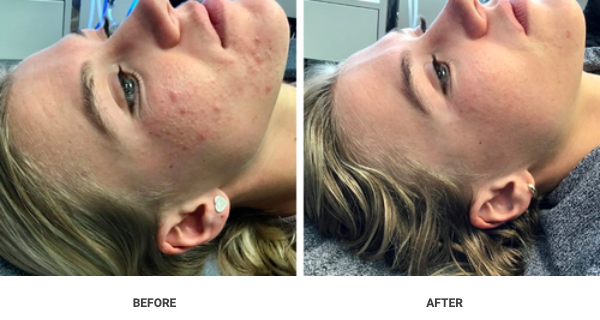
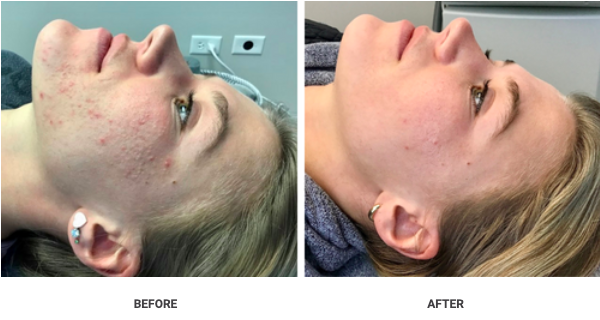
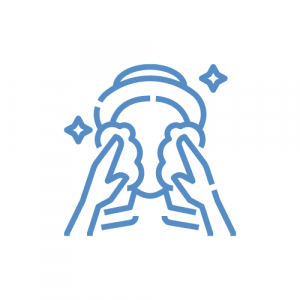
A teen facial can help get rid of acne and decrease acne breakouts on the face, chest, or back. Our aestheticians create effective plans to care for skin to promote continued results. Facials will properly treat the skin and remove clogged pores to lessen and help clear up acne lesions. Schedule an appointment with our licensed aestheticians, Katie or Ashli.Teen Facials with Extractions

Salicylic Acid Peel
Visibly reduce the appearance of mild to severe acne-prone skin while improving skin clarity, texture and tone. Light chemical peels are a great treatment for teens with acne and acne scarring. A solution is applied to the face that “peels” off the top layers of the skin. This helps even out the tone and texture of the skin, especially if acne scarring is present. It also makes it easier for acne medicines to penetrate and get into the pores where they have their effect.
Glytone Acne Treatment System
Glytone Acne Treatment System uses the best acne-fighting ingredients to heal and prevent blemishes. Formulated with salicylic acid, benzoyl peroxide, bakuchiol and more, this powerful system washes away excess oil and debris while gently exfoliating, unclogging pores and preventing breakouts.
Treat acne in 3 key blemish-fighting steps:
 Cleanse: Acne Self-Foaming Cleanser
Cleanse: Acne Self-Foaming Cleanser
 Hydrate: Acne Treatment Lotion:
Hydrate: Acne Treatment Lotion:
 Treat: Acne BPO Treatment Gel
Treat: Acne BPO Treatment Gel
Clinical Results: decreases severity of acne after 7 days of use.
